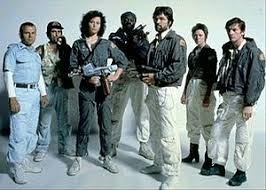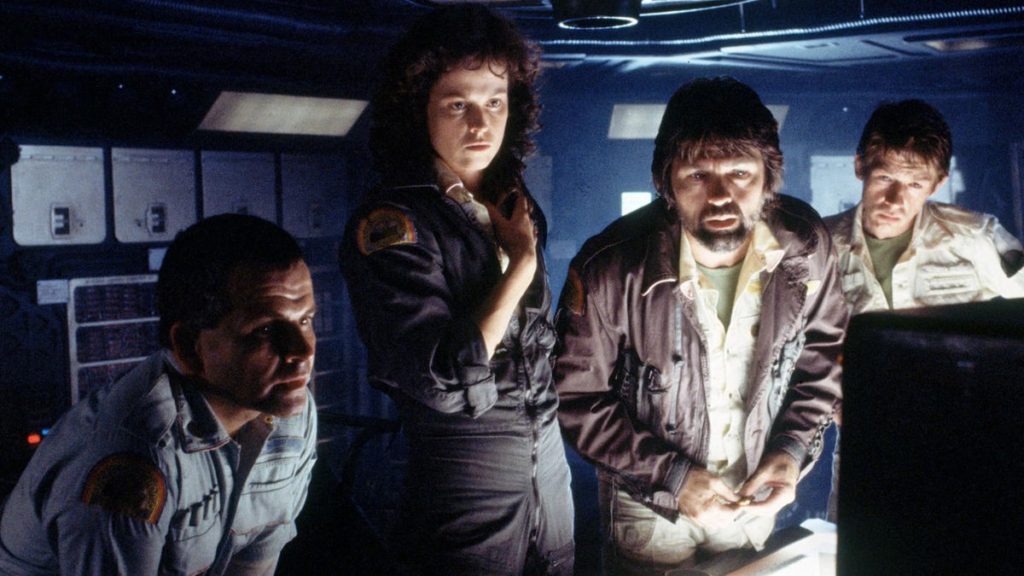Alien was released in 1979, a time period where second wave feminism was in full force after the introduction during the early-mid 1960’s. This influenced the types of characters being made and produced in films, because there was a greater need for stronger female characters. Script writer Dan O’Bannon focused on writing a diverse range of characters to really resonate with the audience. As a result, the characters included in Alien were older than the typical characters included in a horror film and there was also a gender mix. Since most of the characters get killed off fairly early on within the film, keeping Ripley as the sole survivor although she is a female, was a bold move to represent a strong female character. But this was needed drastically at the time to prove that the second wave feminism was moving in the right direction, so the character of Ripley represents the necessity of strong women for the movement of second wave feminism.

Second wave feminism developed the interpretation of a female character in horror films. The movement showed the implied inferiority of women to men, and the unfair systems implemented. In horror film, women were typically portrayed as ‘damsels in distress’ and usually saved by men. An example of this prior to the second wave feminism movement is the character Lila Crane from Psycho (1960, by Alfred Hitchcock) who relies on Sam Loomis to save her. But second wave feminism argued to change this, and during the late 1960’s there was a resurgence of new, strong and empowered female characters. ‘Alien’ was produced towards the end of the movement, which had resulted in the introduction of many new strong female characters. Over the period of the movement, there became a development of female characters from victims to survivors, which led to Clover defining the term ‘final girl’.

Although there are several examples of ‘final girls’ evident in horror during the early 1970’s, many of these lack actual development from survivors to heroines and although there was a resurgence of female empowerment; they typically just make it to the end without facing off with their antagonist. An example of this is Sally Hardesty from ‘The Texas Chainsaw Massacre’ (1974, by Tobe Hooper). Although she is cited as one of the earliest examples of a ‘final girl’ and displays some qualities: she does not avenge against Leather face or the family and is eventually rescued at the end of the film, by a man.
Ultimately, second wave feminism inspired a new wave of strong female characters. There was a slow but visible decline in overly-sexualized female characters, and a growth in female protagonist who began to survive towards the end of the film. However, there was still an emphasis on survival. This represented women still as victims, who barely clung on to their lives and were typically rescued by men (see Hardesty and Strode) instead of taking revenge on their pursuers. Arguably, Ripley is one of the earliest examples of a strong ‘final girl’, she outlives her (mainly male) crew by fighting to survive and finally defeats the alien alone with no assistance from anyone. The development of ‘final girls’ were slow, but stemmed from the second wave feminism movement, many showed strong qualities during the early 1970’s but Alien is one of the first horrors which actually shows a strong heroine who does not rely on anyone aside from herself to survive but also defeat the alien.

The particularly later half of the 1970’s was a major decade for film, most specifically horror and sci-fi. From horror we got: ‘Halloween’ (1978, by John Carpenter) and ‘Black Christmas’ (by Bob Clark, also 1974). All of these films utilized the final girl trope, and were a major success. They all showed a strong female character at the forefront of each plot, not only surviving but battling against the antagonist; usually male. These films were also influenced by second wave feminism, which showed the immediate impact that the movement had on filmmakers and the horror industry has a whole because it led to the creation of strong female protagonists rather than just helpless victims. Similarly, science fiction was enjoying a major run at arguably the top of the film industry perhaps due to the massive success of ‘Star Wars’ (1977, by George Lucas). The influence of such success in both genres from the hybrid would have a profound impact on Alien as there was a large target audience for Alien who would’ve been willing to see the film based on the other successful horror and sci-fi films released at the same time.
